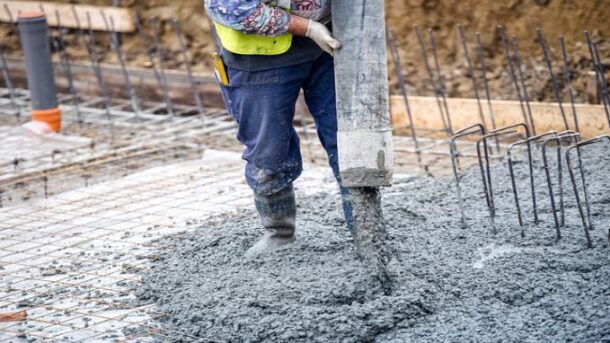Concrete is an extensive construction material used worldwide due to its strength, durability and low costs. You’ll often find concrete in homes, office buildings, sidewalks and bridges alike.
Strength
Concrete is a durable building material capable of withstanding high loads and stresses while remaining fire-proof. Different varieties of concrete differ in terms of their strengths and characteristics due to differing ingredients used and shaping techniques; cement also hydrates over time affecting its properties as time passes, though various additives can be added to modify its properties further. Concrete slabs Melbourne is formed by mixing cement, aggregates and water together with any necessary additives or admixtures; over time it hardens into an extremely strong and long-lasting substance.
The type of concrete chosen depends on the requirements of each project. For instance, an underwater structure or one in an earthquake zone might require different concrete than what’s commonly available in most locations. Strength can be increased using different aggregates or steel reinforcements.
Fly ash, ground-granulated blast furnace slag and waste glass can be substituted for coarse aggregate and cement to reduce environmental impacts in construction projects. Their use increases concrete’s tensile and flexibility properties while ultra-high performance concrete (UHPC) incorporates fibers made from steel, polymer carbon or natural materials into its composition to further increase resilience strengths, low permeability levels and chloride resistance.
Durability
Concrete is an exceptionally resilient building material, capable of withstanding earthquakes, hurricanes, typhoons and tornadoes without succumbing to any significant damage. Not only can we use it for road construction or bridge building but its many other applications also enhance daily life.
Concrete has a long lifespan when properly cared for and reinforced and cured correctly, as this will preserve its strength, durability and resilience. Plus, its versatility enables easy molding into different shapes and forms.
Concrete is an artificial composite material composed of filler, aggregates and binder. Cement paste serves as the glue that holds them all together into an artificial conglomerate. Aggregates may include rock particles, stones and sand; steel fibers may be added for increased resilience and tensile strength. Additional additives called admixtures may be added into the mix for various characteristics – these additives may change fluidity levels of concrete mixes; increase or decrease setting times or strengthen compression and bending strength.
Flexibility
Concrete comes in an assortment of formulations and can be tailored to each project’s requirements. Additionally, unlike other construction materials, it can be mixed on site in response to local climate and conditions – saving both time and money!
Concrete can be reinforced with steel to form high-strength and long-term structures, or cast into shapes to form walls, floors and other features for buildings, bridges or roads.
Concrete consists of cement, water, sand and aggregate; while it may seem simple, its makeup is actually highly complex. Many factors come into play when designing a mix that achieves specific characteristics like fluidity, low permeability and strength. Chemical admixtures may also be used to modify fluidity without altering water-cement ratio; this enables placing concrete in hard-to-reach locations or withstanding harsh environmental conditions like freezing-thawing cycles or deicing chemicals without adversely impacting its performance.
Cost
Concrete is the go-to construction material worldwide. Strong, versatile and affordable, it makes concrete an attractive option for projects from small buildings to high-rise structures. Furthermore, its safer than steel when building with it; and can even be formed into different shapes to fit any structure perfectly.
Even though concrete is everywhere, many don’t understand its composition or history. Many believe cement to be synonymous with concrete when this isn’t the case; cement is just one component; aggregate includes sand or crushed rock fines as well as coarse aggregate.
These components are combined with water to form a wet concrete mix that can then be formed into any desired form and set aside to set. There are various kinds of concrete, depending on specific formulations of binders and aggregates; lightweight concrete is popularly used when road or pavement construction requires low tensile strength requirements.





Recent Comments